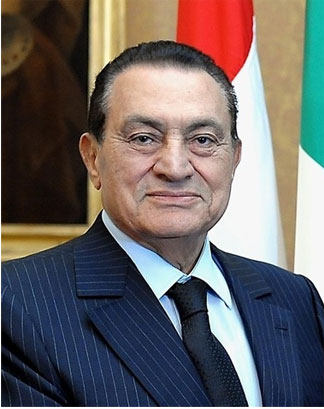2011 Egypt and the Arab Spring: The Fall of Mubarak

Mubarak
The Khobar Towers bombing in 1996 in Dhahran, Saudi Arabia, killed 19 U.S. Air Force personnel and injured 500. Linked to Saudi Hezbollah, backed by Iran, the attack reshaped U.S. military strategies in the Gulf and highlighted regional extremist threats..
In the early months of 2011, the Middle East and North Africa were gripped by a series of uprisings and protests that came to be known as the Arab Spring. What began as an isolated event in Tunisia soon ignited a regional wave of demonstrations demanding political freedoms, economic opportunities, and an end to longstanding autocratic regimes.
The immediate precursor to the Egyptian uprising began in Tunisia. In December 2010, Mohamed Bouazizi, a Tunisian street vendor, set himself on fire in protest of police corruption and ill-treatment. His tragic act became a focal point for widespread discontent with the Tunisian government. Protests ensued, eventually leading to the abrupt resignation of President Zine al-Abidine Ben Ali in January 2011. The swift fall of a long-standing ruler in Tunisia provided both a blueprint and inspiration for movements in neighboring countries.
Egypt, the most populous nation in the Arab world, quickly became a significant battleground of the Arab Spring. Discontent had been brewing in Egypt for years due to political repression, economic stagnation, high unemployment rates, especially among the youth, and perceived widespread corruption within Mubarak's regime.
On January 25, 2011, inspired by the events in Tunisia, thousands of Egyptians took to the streets in what was initially planned as a "Day of Rage." Cairo's Tahrir Square became the epicenter of the protests. Over the next 18 days, Tahrir Square transformed into a symbol of defiance against autocratic rule and a beacon for pro-democracy activists.
Hosni Mubarak, who had been in power for nearly 30 years, responded to the escalating protests with a mix of conciliatory measures and force. He dismissed his government, promised not to seek re-election, and eventually appointed his first-ever vice president. Despite these concessions, the sheer momentum of the protests and the clear demand for his departure meant these efforts were seen as inadequate by the demonstrators.
The Egyptian military, a powerful institution in the country, played a pivotal role. As protests grew in size and intensity, the army declared that it would not use force against the demonstrators, effectively signaling its unwillingness to prop up Mubarak's regime against the popular uprising. On February 11, Vice President Omar Suleiman announced Mubarak's resignation, transferring authority to the Supreme Council of the Armed Forces (SCAF).
Mubarak's ousting was initially met with jubilation, but the subsequent transition to democracy proved tumultuous. The SCAF, which had pledged to shepherd the nation towards democracy, was soon accused of dragging its feet on meaningful reforms and of human rights abuses.
In the following months, political factions that had been suppressed under Mubarak, particularly the Muslim Brotherhood, gained prominence. By mid-2012, Mohamed Morsi of the Muslim Brotherhood was elected president but faced significant challenges, leading to his ouster in 2013 by the military following massive protests against his rule.
The Arab Spring uprisings in Egypt, and indeed across the region, demonstrated the power of grassroots movements and the desire for change. However, they also highlighted the complexities of transitioning from autocratic regimes to stable democracies. The legacy of the Arab Spring in Egypt remains mixed, with many of the aspirations of the Tahrir Square demonstrators yet to be fully realized.
 >
>